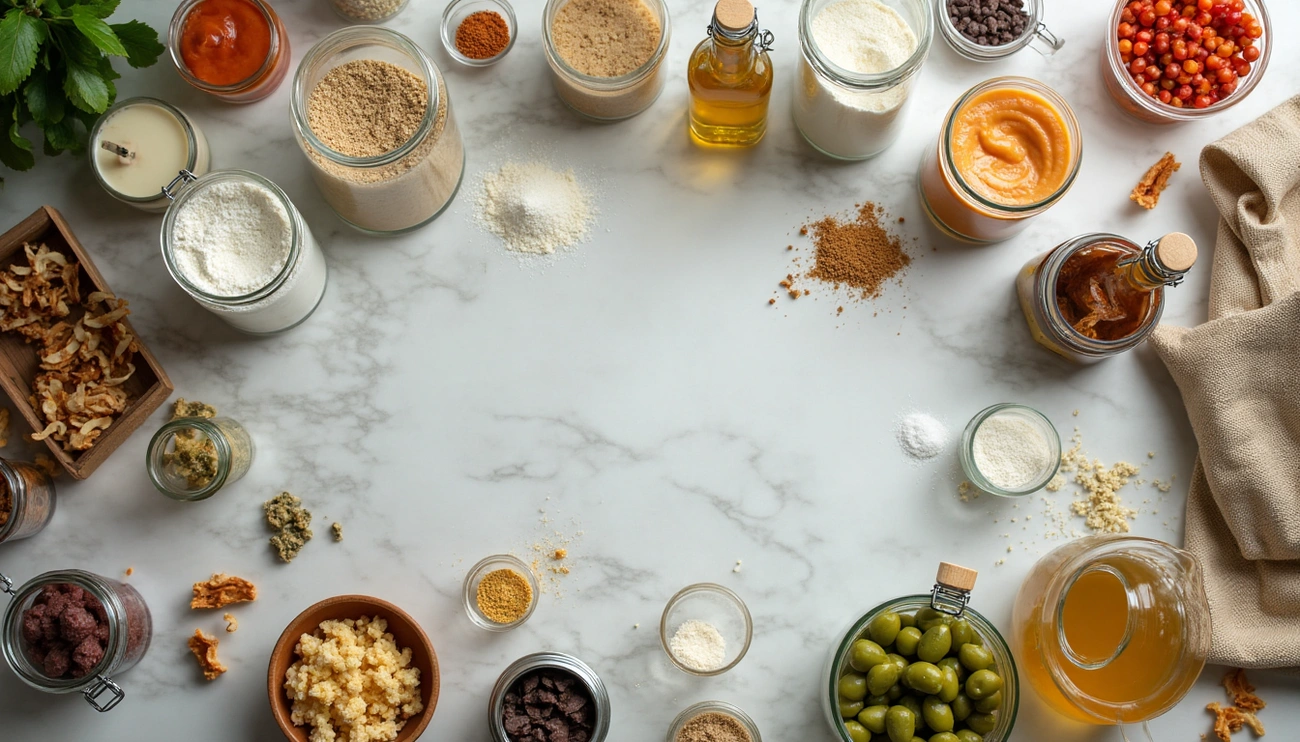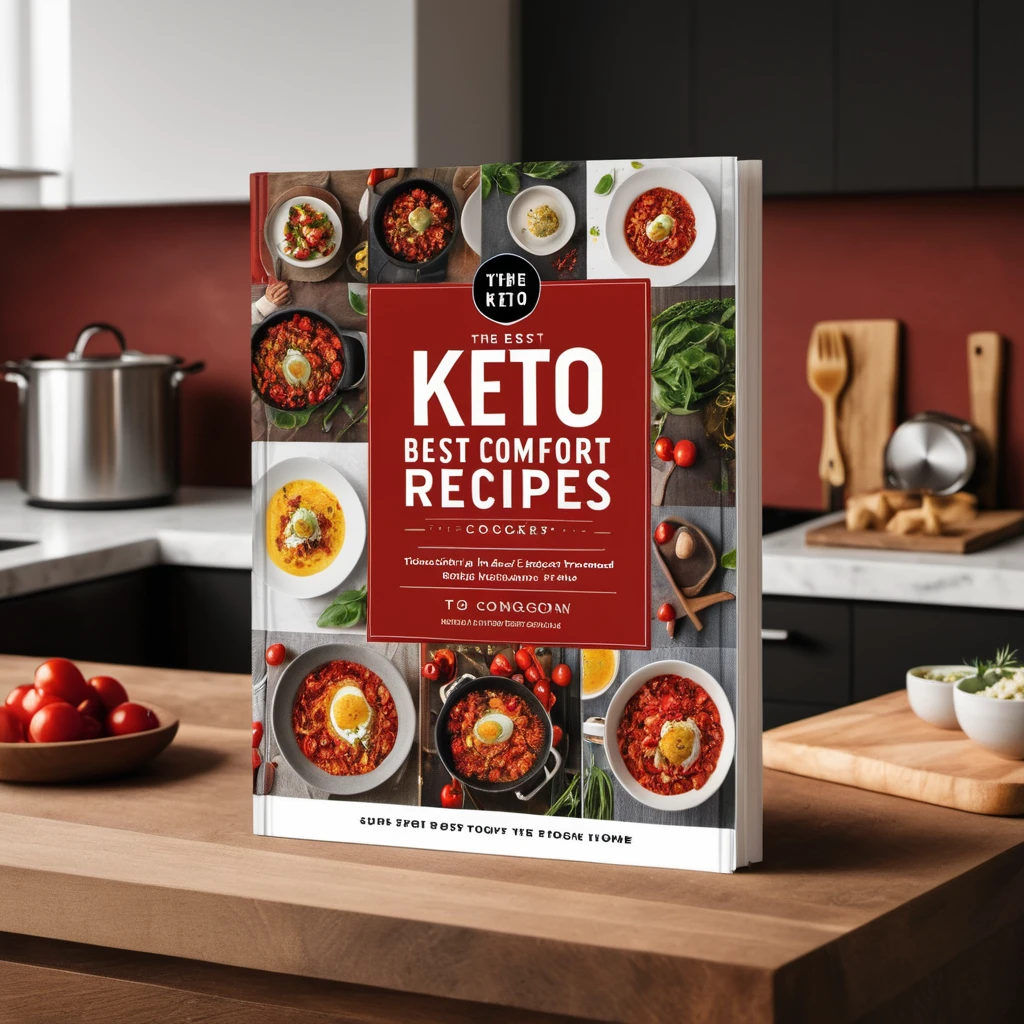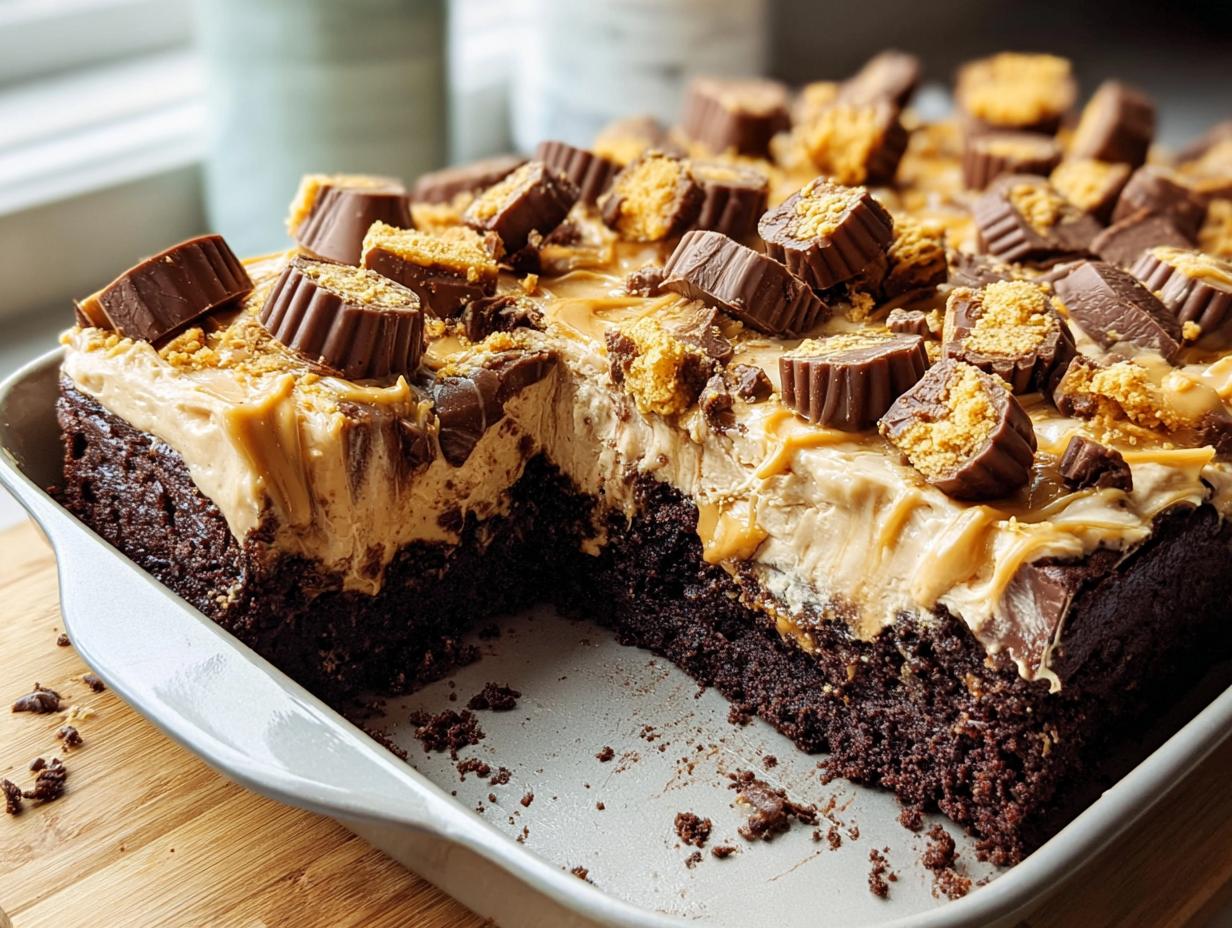Lose 10-15 pounds on keto, then gain it all back during travel or hosting friends? Same story for most people. The right pantry items make staying keto much easier.
First time doing low-carb cooking feels overwhelming. The initial shopping trip seems big, but stocking these essentials is simple. Saves you headaches later. Over 300,000 people already use a solid keto pantry list.
These 27 items cover everything. Daily staples plus special ingredients that make keto cooking enjoyable. Experts recommend these for weight loss and autoimmune issues. They work.
Simple pantry setup changes everything for keto success in 2025.
Almond Flour
Image Source: Two Sleevers
Almond flour works better than wheat flour for keto. No question about it. Gives you the texture you want without the carbs.
Almond Flour Description
Made from blanched almonds ground into fine powder. Light and slightly nutty. The blanching removes skins first, so you get smoother texture than almond meal. Almond meal includes skins and feels coarser.
Looks like wheat flour but tastes better. That nutty flavor enhances both sweet and savory dishes.
Why Almond Flour is Essential
The numbers tell the story. One ounce gives you just 2.6g net carbs after fiber. Plus 6.1g protein and 14.2g fat—mostly the good monounsaturated kind.
Micronutrients are impressive too:
- 35% daily vitamin E
- 31% daily manganese
- 19% daily magnesium for blood sugar control
Low glycemic index means steady energy without crashes. Keeps you in ketosis and stabilizes blood glucose.
How to Use Almond Flour
Replace wheat flour 1:1 in most recipes. Results will be denser since there’s no gluten binding things together.
I use almond flour for:
- Keto pancakes, waffles, and crepes
- Low-carb cookies, bread, muffins
- Breading fish, chicken, or meat
- Thickening sauces
Choose finely ground blanched almond flour over coarser almond meal. Better texture in your finished products. Store large quantities in the freezer.
Coconut Flour
Image Source: Ruled Me
Coconut flour works great for keto baking. One of the lowest-carb flour options you can buy.
Coconut Flour Description
Made from dried coconut meat after milk extraction. Manufacturers dry the leftover coconut pulp and grind it into fine powder. Naturally gluten-free with mild coconut flavor. Looks like wheat flour but acts completely different in recipes.
Why Coconut Flour is Essential
Only 2.2 grams net carbs per tablespoon. Compare that to wheat flour’s 5.8 grams. Quarter cup gives you 10 grams of fiber – five times more than regular flour.
Lasts up to two years in sealed containers. You need way less than almond flour – about 1/4 the amount. Perfect for nut allergies since coconut is technically a fruit.
How to Use Coconut Flour
Soaks up liquids like crazy. This is key to remember.
Simple ratio: 1/4 cup coconut flour = 1 cup almond flour. Each 1/4 cup needs about one egg plus extra liquid. Let your batter sit after mixing – gives the flour time to absorb moisture.
Works best for:
- Fluffy pancakes and muffins
- Binding meatballs
- Thickening soups
- Soft bread textures
Measure precisely. Small changes make big differences.
Monk Fruit Sweetener
Image Source: Amazon.com
Finding sweetness without carbs? Monk fruit sweetener works perfectly. Zero impact on blood sugar.
Monk Fruit Sweetener Description
Monk fruit comes from a small, green melon-like fruit native to southern China and Thailand. Buddhist monks first cultivated it in the 13th century, hence its distinctive name. The sweetness comes from natural compounds called mogrosides, specifically mogroside V, which act as powerful antioxidants. These compounds make monk fruit extract extraordinarily potent—anywhere between 100-250 times sweeter than regular table sugar. Unlike artificial sweeteners, monk fruit extract contains zero calories and zero carbohydrates.
Why Monk Fruit Sweetener is Essential
For me, monk fruit is perfect for keto. It registers zero on the glycemic index, meaning it won’t trigger insulin response or disrupt ketosis. Contains no carbs, calories, sodium, or fat.
The benefits go beyond macros:
- Provides antioxidant properties that may reduce oxidative stress
- Contains anti-inflammatory compounds that may help fight inflammation
- FDA recognizes it as Generally Recognized as Safe (GRAS)
- Suitable for diabetics as it may help improve blood glucose control
How to Use Monk Fruit Sweetener
Works in virtually any application where you’d use sugar. For beverages, add to taste—remember a little goes a long way due to its intense sweetness.
For baking, most brands offer a 1:1 replacement for sugar. I prefer using about ¾ cup monk fruit sweetener to replace 1 cup of sugar. For no-bake recipes, pulse the sweetener in a food processor first to achieve a finer texture.
Always check labels carefully—some products blend monk fruit with other sweeteners like erythritol or dextrose which might affect the total carb content.
Psyllium Husk Powder
Image Source: Amazon.com
Psyllium husk powder works like magic in keto baking. This stuff transforms low-carb recipes into something that actually tastes good.
Psyllium Husk Powder Description
Comes from Plantago ovata plant seeds. Ground into fine powder, it’s basically flavorless. Mix it with liquids and it becomes gel-like. Different from other keto flours – this one acts like gluten.
Why Psyllium Husk Powder is Essential
Nearly zero digestible carbs. Most of it is fiber. Perfect for keto baking without messing up ketosis.
Health benefits are solid:
- Helps with digestion and regular bowel movements
- Lowers cholesterol and balances blood sugar
- Reduces glucose in diabetics
- Acts as a prebiotic
For keto bakers, this is the secret. Makes bread actually light and airy. Keeps moisture in baked goods. Without it, keto bread is usually dense and crumbly.
How to Use Psyllium Husk Powder
Three main uses:
- Binding agent like gluten
- Egg substitute (½ tsp powder + 3 tbsp warm water = one egg)
- Thickener for sauces and smoothies
Use 1-2 teaspoons per cup of flour. Let mixtures rest 10-15 minutes after mixing. The fiber needs time to absorb moisture.
For bread recipes, you can add up to a full cup for perfect structure. When using as egg replacer, the mixture should get thick and slimy like egg whites.
Canned Tuna and Salmon
Image Source: Ketogenic.com
Shelf-stable protein makes keto meal planning simple. Canned tuna and salmon work perfectly for quick meals without refrigeration needs.
Canned Tuna and Salmon Description
Skipjack, yellowfin, and albacore make up most canned tuna options. Skipjack represents about 70% of what Americans eat. These fish get cooked, processed, and sealed in water or oil. Salmon offers similar convenience with different nutrition and usually lower mercury.
One can of light tuna in water delivers 250 mg potassium and 195 mg phosphorus. A 5-ounce can contains up to 10% of daily vitamin D. Both fish provide complete protein with virtually zero carbs.
Why Canned Tuna and Salmon are Essential
These proteins deliver substantial nutrition. Four ounces of tuna in water provides 24 grams complete protein. Same amount in oil offers 32 grams.
Both fish contain omega-3 fatty acids, especially EPA and DHA, which support brain function. Salmon helps balance omega-6 fatty acids from nuts and certain oils. They supply selenium for DNA repair and immune function. Plus vitamin D for bone health.
How to Use Canned Tuna and Salmon
Quick meal ideas:
- Mix salmon with almond flour for keto patties
- Combine tuna with mayo, onion, and cheese for easy casserole
- Serve with fresh vegetables for scooping
Choose skipjack or light tuna for lower mercury. Pick products packed in water or extra virgin olive oil, not seed oils. Watch flavored varieties – Starkist Ranch contains 1g net carbs, but their Ginger Sesame has 8g.
Store unopened cans at room temperature. Leftovers keep 3-4 days refrigerated or frozen up to three months.
Coconut Oil
Image Source: Healthline
Coconut oil works great for keto cooking. Stays solid at room temperature, unlike other plant oils. High saturated fat content makes it stable.
Coconut Oil Description
Two main types: refined and unrefined. Refined has no coconut taste or smell. Unrefined keeps the coconut flavor. I prefer refined for most cooking since it doesn’t compete with other flavors.
Why Coconut Oil is Essential
Zero carbs. Perfect for keto. About 70% of it is medium-chain triglycerides. Lauric acid makes up 52%. MCTs go straight to your liver and become ketones for energy. Contains 10% fewer calories than other oils.
May boost energy expenditure. Might reduce hunger. Has antimicrobial properties.
How to Use Coconut Oil
Refined version handles high heat better – 450°F versus 350°F for unrefined. I use refined for frying and searing. Unrefined works well for baking when you want subtle coconut flavor.
Try these:
- Bulletproof coffee
- Fat bombs for snacks
- Homemade sugar-free chocolate
Store at room temperature. It’s solid but melts easily.
Avocado Oil
Image Source: Healthline
High heat cooking and neutral flavor. Avocado oil handles both better than most oils in your keto pantry.
Avocado Oil Description
Cold-pressed from ripe avocados, this oil comes out clear and pale yellow with minimal flavor. Quality avocado oil tastes practically neutral with subtle nutty undertones. Unlike many plant oils, it contains mostly monounsaturated fats, specifically oleic acid, plus vitamins A, E, and D.
Why Avocado Oil is Essential
The smoke point hits 520°F (270°C). Most cooking oils break down way before that temperature. Perfect for searing and frying without creating harmful compounds.
Nutritionally solid:
- 14g total fat per tablespoon, only 1.6g saturated[292]
- Zero carbohydrates per serving
- Monounsaturated fats support heart health by lowering bad cholesterol
- Helps absorb fat-soluble vitamins from other foods
How to Use Avocado Oil
High-heat cooking where other oils fail:
- Searing meats for perfect crust
- Deep-frying keto foods without burning
- Roasting at high temperatures
- Stir-frying in woks
Cold applications work great too. Make homemade keto mayo—use cold-pressed refined avocado oil that’s clear and tasteless. For salad dressings and marinades, it provides excellent base without competing flavors.
Beef or Chicken Bone Broth
Image Source: Freja
Bone broth works great for keto. Rich in nutrients, zero carbs, and keeps you satisfied between meals.
Bone Broth Description
Real bone broth gets simmered for 12-48 hours to extract minerals, collagen, and gelatin from animal bones. Store-bought versions don’t compare – authentic bone broth contains amino acids that support gut health and immune function. Good bone broth turns jiggly when refrigerated from all that extracted collagen. Quality stuff has a richer mouthfeel and deeper flavor than regular broth.
Why Bone Broth is Essential
Perfect keto macros – chicken bone broth has 0g carbs, 1g fat, and 10g protein per cup.
Bone broth helps with:
- Electrolyte balance (sodium, potassium, magnesium, calcium) to prevent keto flu
- Gut health from collagen and gelatin
- Joint support from glycine and proline amino acids
- Appetite control
How to Use Bone Broth
Drink it warm like coffee – two to three cups daily helps when starting keto. I add a pinch of pink Himalayan salt for extra electrolytes.
Use it instead of water for cooking cauliflower rice or vegetables. Adds flavor and nutrients. Makes excellent sauce bases without carbs.
Great for intermittent fasting – provides nourishment without breaking ketosis. Homemade keeps 5-7 days refrigerated or freeze in batches.
Can you make bone broth ahead and freeze it in ice cube trays for easy portioning?
Unsweetened Nut Milks
Image Source: Hip2Keto
Dairy section gets tricky on keto. Unsweetened nut milks solve this problem perfectly.
Nut Milks Description
Made by soaking nuts, blending with water, and filtering out solids. Almond milk has just 1g net carbs per cup. Macadamia milk contains virtually 0g net carbs. Cashew milk runs about 2g net carbs per cup. All three work great for keto.
Store-bought versions often contain only 2% actual almonds. Homemade tastes better and has more nutrients. Check labels carefully – additives and gums can add unwanted ingredients.
Why Unsweetened Nut Milks are Essential
Way fewer carbs than dairy milk. Lactose-free too, which helps if dairy bothers you.
Each type offers different benefits:
- Almond milk provides vitamin E and antioxidants
- Macadamia milk contains heart-healthy monounsaturated fats
- Coconut milk (carton varieties) has 1g net carbs versus 6g in canned versions
How to Use Unsweetened Nut Milks
Works in almost everything:
- Coffee and tea (almond milk froths nicely)
- Smoothie base (coconut-almond blends work well)
- Keto cereal companion
- Chia pudding (almond milk stays stable longer than coconut)
- Baking recipes
Store unopened cartons at room temperature. Once opened, refrigerate and use within 4-5 days. Shake well before using. Homemade versions last about four days.
I prefer making my own when I have time. Much richer flavor.
Sugar-Free Nut Butters
Image Source: Amazon
Sugar-free nut butters work great for keto. I keep several jars stocked. Regular nut butters have way too much added sugar.
Nut Butters Description
Good sugar-free nut butters contain just nuts and maybe salt. That’s it. Texture varies from smooth to chunky depending on how they process them. Peanut butter is most popular, but almond butter has only 3g net carbs per serving. Macadamia butter is even lower in carbs. Tahini has 0g net carbs per 30g.
Quality ones separate at room temperature. You have to stir them. That’s how you know they’re real.
Why Sugar-Free Nut Butters are Essential
I use these for healthy fats that keep me in ketosis. They provide decent protein too, around 5-8g per serving.
They keep me full between meals. Prevents me from reaching for non-keto snacks. Plus they have magnesium for blood sugar control.
Watch out for hidden sugars though. Companies sneak in honey, glucose, corn syrup, maple syrup, agave, and dextrose. Some add inflammatory seed oils or hydrogenated oils.
How to Use Sugar-Free Nut Butters
I blend them with coconut oil in a 2:1 ratio for quick fat bombs. Also spread on keto bread or dip celery sticks. Add to smoothies for extra creaminess. Mix into Asian sauces like almond butter chicken.
Buy single-ingredient versions or keto-specific ones with MCT oil. Store at room temperature for easy spreading. Refrigerate for longer shelf life but let them warm up first.
Canned Coconut Milk
Image Source: Chantal Organics
Thick, creamy canned coconut milk works great for keto cooking. I use it in curries and soups all the time.
Canned Coconut Milk Description
Made from mature coconut meat, canned coconut milk separates into cream on top and thinner liquid below. Full-fat versions have way more coconut cream than light versions.
Regular full-fat contains about 48g fat, 6.4g carbs, and 4.6g protein per cup. Light versions have much less fat. Canned is different from carton coconut milk, which is diluted and has additives.
Why Canned Coconut Milk is Essential
Perfect for keto since 90% of calories come from fat. The fat includes MCTs that convert to ketones easily. Helps you get into ketosis faster.
One ounce has 7g fat, 1.5g carbs, and 0.5g protein. Always buy unsweetened.
How to Use Canned Coconut Milk
I use it for:
- Thai curries and Indian dishes
- Creamy keto soups
- Homemade keto ice cream
- Coffee creamer
- Puddings
Shake the can before using if it separated. Store leftovers in the fridge for 5 days.
For me, full-fat works best. Light versions are too watery.
Low Carb Condiments
Image Source: Hip2Keto
Store-bought condiments pack way too much sugar. I learned this the hard way checking labels. Regular BBQ sauce can have 10-15g carbs per 2 tablespoons. That’s a lot.
Low Carb Condiments Description
Good keto condiments have minimal carbs and enhance your meals. I stick to these basics:
- Mustard: Naturally low carb, adds tangy flavor
- Mayonnaise: High fat, virtually zero carbs with quality oils
- Hot sauce: Generally carb-free, might boost metabolism
- Sugar-free ketchup: Only 0.7g net carbs per tablespoon versus 3.5g in regular
- Soy sauce/coconut aminos: Umami flavor with minimal carbs
I avoid artificial sweeteners like sucralose. Natural sweeteners work better.
Why Low Carb Condiments are Essential
Bland keto meals get boring fast. These condiments fix that without adding carbs. They help you stick to keto long-term.
I make my own mayo with avocado oil. Gets you healthy monounsaturated fats. Homemade versions skip the artificial ingredients too.
How to Use Low Carb Condiments
Always read labels first. Hidden sugars show up as glucose, fructose, dextrose, sucralose, maltodextrin. I make my own ketchup with three ingredients plus spices.
Homemade ketchup lasts 3-4 weeks in the fridge. Freeze in ice cube trays for up to 6 months. Sugar-free honey mustard keeps 4 weeks refrigerated.
I add hot sauce to cauliflower pizza. Dip vegetables in sugar-free mayo. Use unsweetened BBQ sauce on chicken and ribs. Makes keto meals way more satisfying.
Herbs and Spices
Image Source: Zarlengo Seasoning
Bland keto meals versus delicious ones? Herbs and spices make the difference. Zero carbs, maximum flavor.
Herbs and Spices Description
Most single herbs and spices work perfectly for keto. Stock your pantry with parsley, oregano, basil, thyme, rosemary, sage, and bay leaves. For spices, grab salt, black pepper, cayenne, paprika, turmeric, curry powder, cumin, garlic powder, ginger powder, onion powder, and cinnamon.
Pre-made seasoning blends? Watch out. Many contain hidden sugars, starches, and anti-caking agents. Manufacturers add sugar to popular seasonings all the time. Read labels carefully.
Why Herbs and Spices are Essential
Simple answer – they transform restrictive eating into enjoyable meals. Keto dieters need extra salt since low-carb diets lower sodium levels naturally.
Health benefits beyond flavor. Turmeric fights inflammation. Cilantro provides vitamins A, K, and C. Cinnamon adds warmth plus antioxidant properties. Easy wins.
How to Use Herbs and Spices
Make your own spice blends. Complete control over ingredients. Buy single spices without fillers.
Replace ground spices every six months, whole spices every two years. Try rosemary with lamb or cumin with cauliflower. Even mint works great in keto desserts.
Simple additions, big results.
Keto Snacks (Pork Rinds, Cheese Crisps)
Image Source: PorkRinds.com
Crunchy snacks without the carbs. Pork rinds and cheese crisps solve the chip craving problem on keto.
Keto Snacks Description
Pork rinds are fried pig skin. Light, airy, crunchy. Most have just pork skin and salt – zero carbs. Cheese crisps are baked or fried cheese until crispy. Sonoma Creamery’s Pork Rind Cheddar Crisps have 1g carbs per 28g serving, with 15g protein and 9g fat. Primal Sisters’ White Cheddar Pork Crisps contain 0g carbs, 5g fat, and 8g protein per 14g serving.
Why Keto Snacks are Essential
Snack time gets tricky on keto. Having ready-to-eat options prevents grabbing high-carb alternatives when hunger hits. These give you satisfying crunch without the carbs in potato chips or crackers.
They travel well too. Perfect for:
- Work lunches
- Road trips
- Flights
- Emergency snacks in your car or desk drawer
How to Use Keto Snacks
Eat them straight from the bag. I also use pork rinds as keto “breadcrumbs” for coating chicken, fish, or vegetables before baking. Crush them up to create zero-carb breading for fried foods.
Cheese crisps work as crackers for dipping into guacamole or topped with sugar-free nut butters. I pair them with tuna salad, pickled vegetables, or avocado for complete mini-meals that require zero cooking.
Check labels on flavored varieties – some contain added ingredients that increase carb counts.
Sugar-Free Chocolate Chips
Image Source: Amazon.com
Sugar-free chocolate chips solve the biggest keto dessert problem. You get chocolate without the carbs.
Chocolate Chips Description
These chips use monk fruit or erythritol instead of sugar. ChocZero’s dark chocolate chips have just 1g net carbs per serving. They taste like regular chocolate chips. Most brands offer dark, milk, and white chocolate varieties.
Regular chocolate chips spike blood sugar. These don’t.
Why Sugar-Free Chocolate Chips are Essential
For me, essential for keto baking. Around 1g net carbs per serving. You can make cookies and brownies without breaking ketosis.
Some brands add prebiotic fiber for gut health. Good bonus. Many are vegan and gluten-free too.
How to Use Sugar-Free Chocolate Chips
Work great in:
- Keto cookies and brownies
- Pancakes and waffles
- Fat bombs and no-bake treats
- Melted for dipping berries
Homemade versions might not hold their shape when baked. Store-bought ones work better for cookies.
Store at room temperature for two months. In summer, refrigerate them. They get more concentrated sweetness than regular chocolate—use less.
I add them to everything. Makes keto desserts actually taste good.
Shelf-Stable Vegetables (Olives, Artichokes)
Image Source: Fluffy Chix Cook
Fresh vegetables go bad too fast. Canned olives and artichokes stay good forever and work perfectly for keto.
Shelf-Stable Vegetables Description
Olives are technically fruits but taste like vegetables. Only 3g net carbs per 100g. Kalamatas are my favorite – briny and flavorful. Castelvetranos taste buttery and mild.
Artichoke hearts pack tons of nutrition. One cup cooked has 90 calories, 10g fiber, and just 10g net carbs. Plus 5g protein per cup – impressive for a plant. Canned ones taste almost as good as fresh.
Why Shelf-Stable Vegetables are Essential
These vegetables make keto much easier. Olives give you healthy fats. Artichokes provide fiber. Both essential for keto success.
Health benefits are solid too:
- Artichokes contain luteolin that prevents cholesterol formation
- Olives provide antioxidants that reduce inflammation
- Artichoke extract may lower blood pressure
- Olives contain oleic acid for better heart health
How to Use Shelf-Stable Vegetables
I add artichoke hearts to everything. Pizza toppings, salads, dips. You can make them into chips – pat dry, add olive oil, bake until crispy.
Olives work straight from the jar. I chop them into sauces or blend into tapenade. Both vegetables are perfect for antipasto platters with cheese and meats.
Choose varieties without added sugar or vegetable oils. Store unopened cans in pantry. Refrigerate leftovers 3-4 days after opening.
Keto Baking Mixes
Image Source: ChocZero
When you’re too busy to measure almond flour and sweeteners, keto baking mixes save the day. Simple solution for quick treats.
Keto Baking Mixes Description
These mixes combine almond flour or coconut flour with zero-glycemic sweeteners and leavening agents. King Arthur makes decent ones that taste good while keeping carbs low.
You can find brownie, cake, muffin, and even “cornbread” options now. Most quality mixes have 1-4g net carbs per serving. Much better than regular mixes with 20+ grams. Duncan Hines’ keto cake mixes contain just 4g net carbs with zero added sugar.
Why Keto Baking Mixes are Essential
They save time. Period. When measuring multiple specialty ingredients feels like too much work, these mixes work perfectly.
Miss Jones Baking Co. offers almond flour-based mixes ready in under 30 minutes. No guesswork, consistent results. Their brownie mix has just 2g net carbs per serving.
Great for beginners who haven’t bought all the specialty ingredients yet.
How to Use Keto Baking Mixes
Read the instructions carefully. They’re different from regular mixes. Most need eggs, butter, or oil added. Watch cooking times – keto baked goods cook faster because of higher fat content.
Store unopened mixes in cool, dry places. Eat prepared leftovers within 3-5 days. Quality varies between brands. Swerve and Good Dee’s consistently deliver moist textures with balanced sweetness.
Xanthan Gum
Image Source: Amazon
Tiny amounts make huge differences in keto baking. Xanthan gum fixes the texture problems you get with low-carb flours.
Xanthan Gum Description
Made by fermenting glucose using Xanthomonas campestris bacteria. Sounds weird but it works. Fine white powder that dissolves in hot or cold liquids. No taste, so it won’t mess with your flavors.
Used in tons of industries – cosmetics, pharmaceuticals, food production. For keto baking, it’s the secret ingredient that makes everything stick together.
Why Xanthan Gum is Essential
Zero net carbs. Contains fiber your body can’t digest. Perfect for keto.
Main benefit – it replaces gluten in baking. Without it, keto breads and muffins fall apart. Creates that stretchy, elastic texture you miss with almond flour. Been using it in low-carb cooking for years now.
How to Use Xanthan Gum
Start small. Quarter teaspoon for sauces and smoothies. About 10 grams per kilo of flour for bread. Also works in salad dressings to prevent separation.
Great for no-bake desserts like cheesecakes. Just don’t overdo it – too much creates a slimy mess. I learned this the hard way.
Store in airtight container in cool, dry place. Keeps its effectiveness longer that way.
Conclusion
These 27 items change everything. No more scrambling for keto meals or falling off track during travel.
The right pantry setup makes keto sustainable. Flours, sweeteners, and fats become building blocks for countless recipes. Shelf-stable proteins and vegetables ensure you always have options. Initial investment seems big, but long-term benefits outweigh costs.
Everything works together. Your kitchen supports your goals without sacrificing flavor. Less tempted by high-carb alternatives when you have what you need for quick, delicious low-carb meals.
Successful keto followers credit preparation. Having the right ingredients readily available makes all the difference. This list is your roadmap to keto success in 2025.
Quality matters as much as carb count. Choose organic, minimally processed versions when possible. Read labels carefully to avoid hidden sugars and inflammatory ingredients.
Start with a few essentials and build gradually. Before long, you’ll wonder how you managed without these versatile, low-carb ingredients that make keto cooking simple and enjoyable.
FAQs
Q1. What are some essential keto pantry staples for 2025?
Some key keto pantry staples include almond flour, coconut flour, monk fruit sweetener, canned coconut milk, and sugar-free nut butters. Other essentials are bone broth, unsweetened nut milks, low-carb condiments, herbs and spices, and shelf-stable vegetables like olives and artichokes.
Q2. How can I maintain ketosis while traveling or during busy periods?
Stock up on portable keto-friendly snacks like pork rinds, cheese crisps, and sugar-free chocolate chips. Keep canned tuna or salmon on hand for quick protein. Having keto baking mixes and shelf-stable vegetables in your pantry also helps you prepare quick meals without compromising your diet.
Q3. What are some versatile keto-friendly ingredients for baking?
Almond flour, coconut flour, and xanthan gum are excellent for keto baking. Monk fruit sweetener provides sweetness without carbs. Psyllium husk powder can help improve texture in baked goods. These ingredients allow you to create a wide variety of keto-friendly treats.
Q4. Are there any convenient keto options for those new to the diet?
Yes, keto baking mixes offer a convenient solution for those new to keto baking. They typically require minimal additional ingredients and save time. Additionally, pre-made low-carb condiments and sugar-free chocolate chips can help ease the transition to a keto lifestyle.
Q5. How can I add flavor to keto meals without adding carbs?
Use a variety of herbs and spices to enhance flavor without adding carbs. Low-carb condiments like mustard, sugar-free ketchup, and hot sauce can also add zest to your meals. Experiment with different types of vinegars and citrus zests for additional flavor dimensions in your keto cooking.






